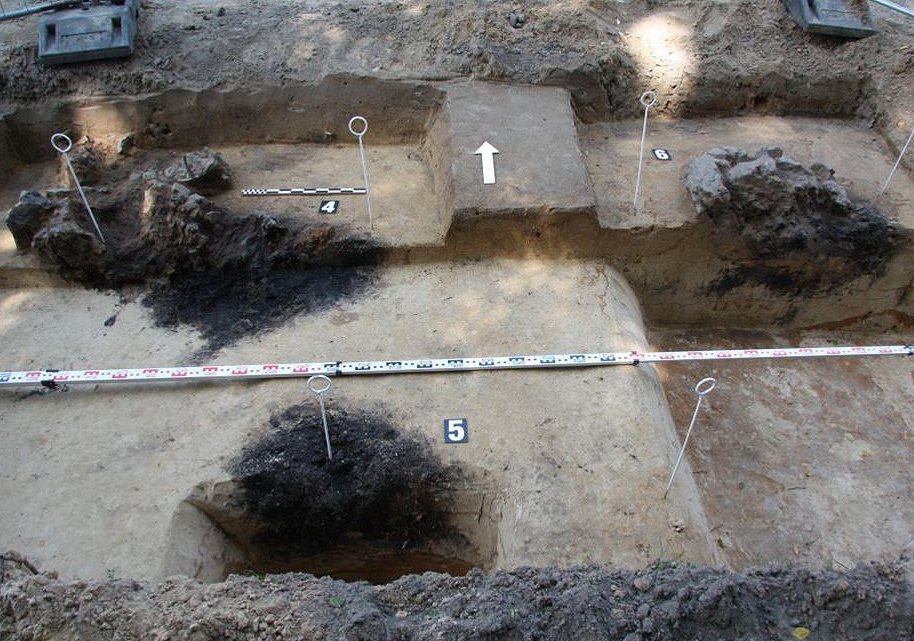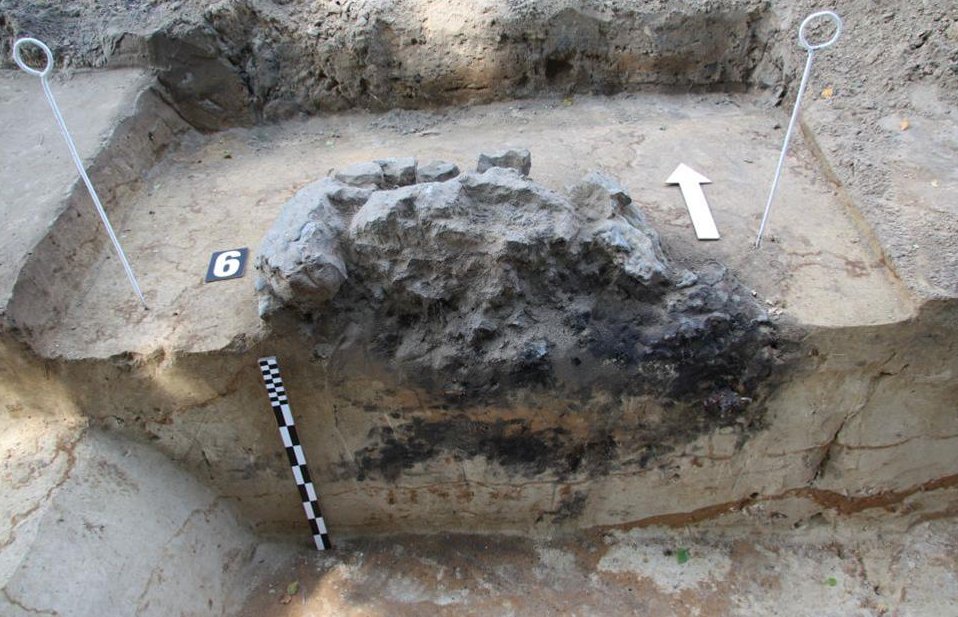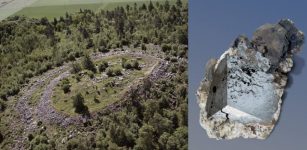2,000-Year-Old Iron Large Smelting Center Unearthed In Poland
MessageToEagle.com – One of the largest metallurgical centers of Europe – the Mazovia Metallurgical Center – has been discovered in Kanie village (Masovian Voivodeship), in east-central Poland.
The settlement with more than 70 ancient furnaces for iron smelting, the so-called ‘bloomeries’ had its metallurgical activity approximately 2 thousand years ago.

It is estimated that from the 2 BC to 4 AD as many as 150 thousand furnaces could be operated in the center.
The discovery was made in the then “barbarian” Europe – as the Romans called the inhabitants of this part of the continent, living outside the Empire.
‘Bloomeries’ were single-use furnaces, partially dug into the ground. chimneys protruding above ground level reached two meters in height. Smelting iron took about a day.
The temperature inside the furnace oscillated around 1200-1300 degrees Celsius – according to information provided by the archaeologist.

Today we discover only the recessed parts of the furnaces, pits filled with waste material, slag. The top part of the ‘bloomery’, clay shaft – was broken after completion of the smelting process to get to the iron obtained from bog iron,” said the PAP excavations leader, Dr. Tomasz Kołomański, in an interview for PAP.
Still not much is known about iron production technology from two thousand years ago because this activity has not been recreated yet.
“Today during the experimental attempts to smelt iron from bog iron, we are able to produce a lump of iron that fits in one hand, while the ancient metal workers obtained 20-30 kg of iron from 200 kg load” – explained Dr. Kołomański.
In addition to bloomeries, excavations have revealed the remains of large utility rooms with loom weights and clay spindle whorls, evidence of occupations related to handicraft, weaving and spinning.
Large amount of animal bones originating from cattle, pigs, sheep and goats, and even deer can say much about the diet of these ancient people, identified with the Vandals who are believed to have migrated from southern Scandinavia to Poland about 120 BC. Later, in the half of the 5th century, their representatives sacked and looted Rome.
MessageToEagle.com
Expand for referencesReferences:
Related Posts
-
 Discovered Historic Warship Blekinge From The 17th Century Was Deliberately Sunk During Sweden’s War With Russia And Its Allies
No Comments | Feb 2, 2017
Discovered Historic Warship Blekinge From The 17th Century Was Deliberately Sunk During Sweden’s War With Russia And Its Allies
No Comments | Feb 2, 2017 -
 Ancient Material From The Mysterious Vitrified Broborg Hill-Fort Can Offer Nuke Waste Solutions
No Comments | Apr 30, 2016
Ancient Material From The Mysterious Vitrified Broborg Hill-Fort Can Offer Nuke Waste Solutions
No Comments | Apr 30, 2016 -
 Several Intriguing Hawaiian Petroglyphs Discovered On Waianae Coast
No Comments | Aug 18, 2016
Several Intriguing Hawaiian Petroglyphs Discovered On Waianae Coast
No Comments | Aug 18, 2016 -
 Battle Of Himera: New Study That Contradicts Historical Accounts
No Comments | May 25, 2021
Battle Of Himera: New Study That Contradicts Historical Accounts
No Comments | May 25, 2021 -
 The Largest Ever Roman Mosaic Unearthed In Southern Turkey
No Comments | Sep 18, 2012
The Largest Ever Roman Mosaic Unearthed In Southern Turkey
No Comments | Sep 18, 2012 -
 14,000-Year-Old Settlement In British Columbia Confirms Heiltsuk Nation’s Myth Of ‘Time Immemorial’
No Comments | Apr 7, 2017
14,000-Year-Old Settlement In British Columbia Confirms Heiltsuk Nation’s Myth Of ‘Time Immemorial’
No Comments | Apr 7, 2017 -
 How Did A Rare 2,000-Year-Old Gem Seal Depicting God Apollo End Up In The City Of David?
No Comments | Nov 5, 2020
How Did A Rare 2,000-Year-Old Gem Seal Depicting God Apollo End Up In The City Of David?
No Comments | Nov 5, 2020 -
 LIDAR Discovers Lost Ancient Cities Older Than Any Known Complex Amazonian Society
No Comments | Jan 15, 2024
LIDAR Discovers Lost Ancient Cities Older Than Any Known Complex Amazonian Society
No Comments | Jan 15, 2024 -
 Untouched 1,300-Year-Old Grave Of Merovingian Warrior With Complete Armor Found In Ingelheim, Germany
No Comments | Sep 22, 2023
Untouched 1,300-Year-Old Grave Of Merovingian Warrior With Complete Armor Found In Ingelheim, Germany
No Comments | Sep 22, 2023 -
 Oldest Known Projectile Points In The Americas Discovered In Idaho
No Comments | Dec 28, 2022
Oldest Known Projectile Points In The Americas Discovered In Idaho
No Comments | Dec 28, 2022
